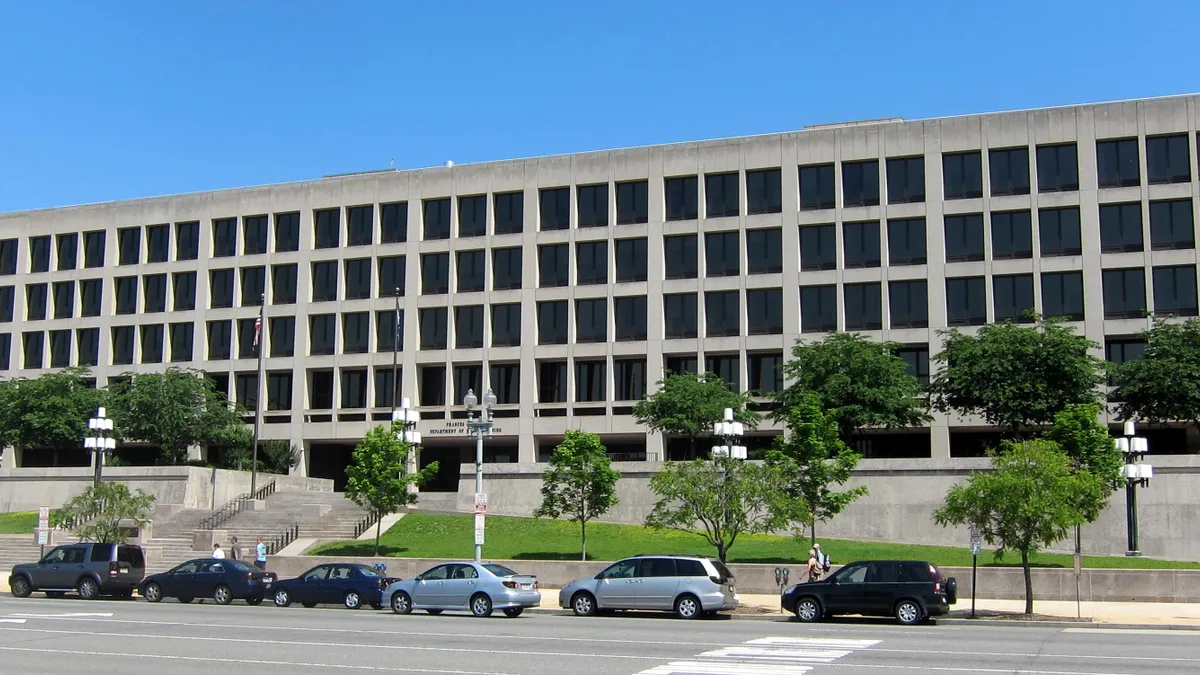If the human resources experts who we spoke to agreed on anything, it's this: HR departments may be missing the boat if they've waited until now to plan for changes to federal overtime regulations.
The U.S. Department of Labor (DOL) began the journey to update the Fair Labor Standards Act's (FLSA) salary threshold overtime exemption for certain white-collar professionals an administration ago when it attempted to raise the threshold to $47,476 in 2016. After court battles, a presidential election and then some, employers have now had almost four years to prepare for changes.
"The pain point is going to be for employers who don't react appropriately," David Miller, attorney at Bryant Miller Olive, told HR Dive in an interview. "What they need to be doing … is get ready."
Miller and other sources echo what legal experts have been saying since a federal judge enjoined the Obama administration's update in 2016: Employers need to prepare to either pay newly eligible workers overtime, or give them a raise that puts them over the new $35,568 threshold.
That calculation involves a cost and benefit analysis that should be easy to put together provided the employer has the necessary data gathered in one place, Tammy McCutchen, shareholder at Littler Mendelson, said in an interview with HR Dive. There's also a chance employers might discover that some employees are incorrectly classified as either exempt or non-exempt in the process.
One thing the final rule does not change is the FLSA's duties test. Employers should take note that law's overtime exemptions apply only to white-collar professionals in certain positions, including executive, administrative, professional, computer and outside sales employees. Job titles do not determine an employee's exempt status, according to DOL.
Reclassifying employees does take time, McCutchen noted. "My experience is that those do take longer than 90 days." Per DOL, the final rule is set to take effect Jan. 1, leaving employers approximately 99 days to prepare.
One of the issues employer groups raised in public comments on the proposed rule was time to compliance. The Society for Human Resource Management, for example, asked DOL to grant in the final rule at least 120 days between announcement and implementation. But it appears the January deadline is here to stay: It's unlikely that the agency would be able to extend the deadline past the current one, Susan Harthill, partner at Morgan Lewis, told HR Dive, because it would have to go through further rulemaking to do so.
Who bears the most burden?
The final rule is likely to be most burdensome on mid-sized employers, Miller said, particularly if such organizations don't already track workers' time. Skipping this type of tracking isn't a good idea, Miller said: "You should be tracking for performance if not for pay."
Although it's not yet clear which industries will be most impacted by the Trump administration's rule, a 2016 analysis of the Obama DOL's rule found that the education and health services, professional and business services, and financial activities sectors had the highest number of potentially affected workers.
"Education and health services, wholesale and retail trade, and professional and business services, are the most impacted industries, according to DOL, but ALL industries are potentially impacted," Harthill said in a statement emailed to HR Dive. "Also often overlooked is the impact on non-profits and state and local governments, which are subject to the FLSA and often have lower salaries."
Employers, regardless of where they operate, will also need to determine how they'll handle bonuses under the rule, McCutchen said. Employers may include certain non-discretionary bonuses and incentive payments and commissions paid annually as up to 10% of an employee's salary level when calculating whether they fall beneath the new threshold.
Don't forget about managers, employees new to timekeeping
Beyond the issue of reclassification, employers must also determine how they plan to communicate the situation to employees directly affected by the rule. Those who have never tracked their time will need to be trained on how to do so, McCutchen said.
The same goes for managers who've never had to manage non-exempt employees, which is not an uncommon situation for employers to face, Miller said. Employers need to ensure these managers familiarize themselves with managing overtime limits and preparing budgets accordingly, and employees new to the process may be liable to "let it slip" when it comes to tracking hours, he noted.
"Some are going to see it as just more hassle than they want to deal with," Miller said, adding that the burden of compliance is something else employers will want to factor into their cost-benefit analyses.
January won't mark the last time the overtime threshold is updated, as DOL said it intends to do so every four years. This differs from the process of an automatic index that some employee advocates called for.
And while the rule may face legal challenges in the near future, that shouldn't delay employer compliance efforts, McCutchen said.






















